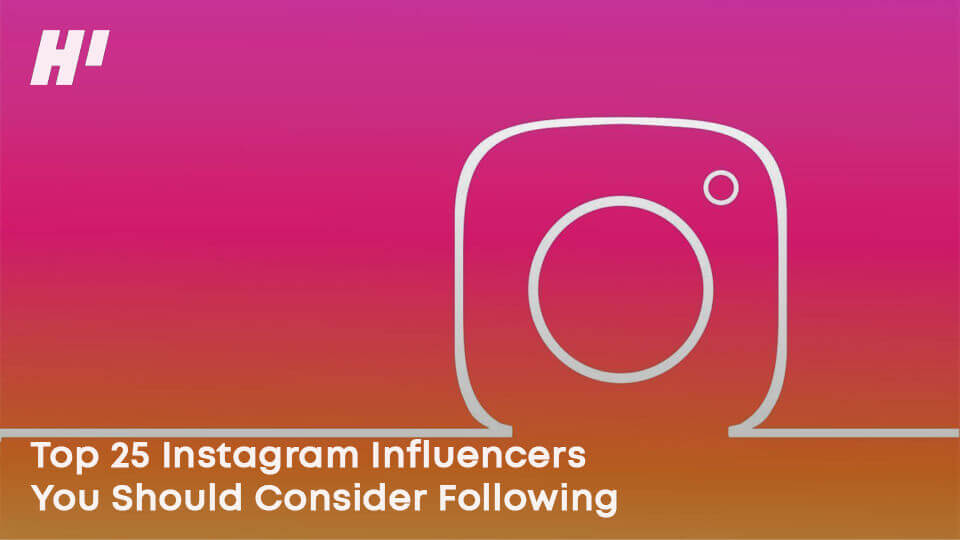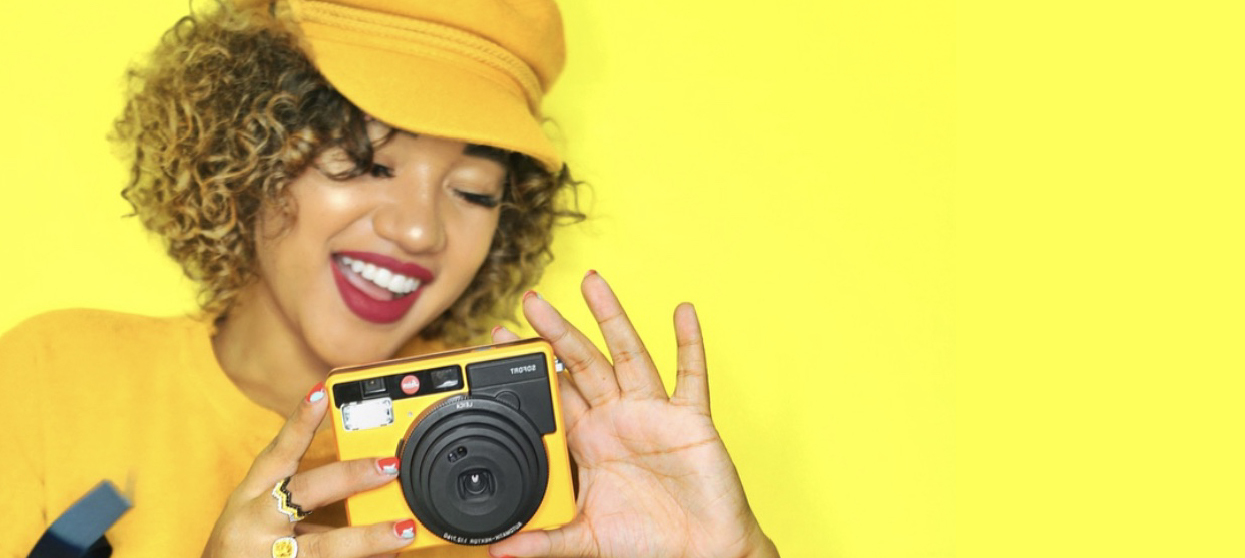How to Create a High-Impact Influencer Marketing Strategy
The idea of having someone else endorse or promote your products and services isn’t a new idea, but it is a growing one. It used to be a space dominated by celebrities and high-profile personalities.
Table of Contents
- How to Create a High-Impact Influencer Marketing Strategy
- The Numbers
- The Market
- The ROI
- What Makes Influencer Marketing So Attractive to Consumers?
- What Does Influencer Marketing Look Like in 2023?
- Consumer Trust
- Bigger Influencer Marketing Budgets
- Broader Goals
- What Goes into the Most Powerful Influencer Marketing Strategies?
- Influencer Marketing Strategies [With Examples]
- GoldToe
- Community Coffee
- MTV Capsule Collection
- What Matters in Influencer Marketing
- How to Build an Influencer Marketing Strategy in 2023
- Determine the Goals of Your Influencer Marketing Strategy
- Outline Your Strategy With the “Three Rs” of Influencer Marketing
- Have a Deep Understanding of Your Target Audience
- Choose the Right Influencer Type
- Vet Your Influencers
- Tips for Running a Seamless Influencer Marketing Strategy
- Have Your Brand Guidelines in Place
- Manage Your Expectations
- Analytics That Don’t Matter
- Treat Influencers Professionally
- Frequently Asked Questions About Influencer Marketing Strategy
- How Many Influencers Should I Include in My Influencer Marketing Strategy?
- What Should I Pay Influencers?
- What Makes an Influencer Marketing Strategy Successful?
- What Kind of Strategies Do Influencers Use?
- How Do I Know Whether or Not My Influencer Marketing Strategy Will Be Effective?
- Is Building an Influencer Marketing Strategy Hard?
- Should I Hire an Influencer Marketing Agency for My Campaign?
- Influencer Marketing Agency vs. DIY Influencer Marketing Strategies: What’s Better?
- A Bulletproof Influencer Marketing Strategy is the Key to Measurable Results
In today’s social media market, there are influencers who have only a few thousand followers but have higher engagement rates than accounts with hundreds of thousands or even millions of followers.
No matter what platform you prefer, you don’t have to scroll very far before you see a plethora of posts and videos selling clothes, training equipment, cosmetics, food, and home goods. They come in all shapes and sizes, such as feed posts, Reels, Stories, and Live videos.
But much just like any other marketing campaign, it has to be done right. Throwing up a few videos online won’t generate the kind of buzz a high-impact influencer marketing strategy is designed to accomplish.
So what’s the difference maker? And how can you make sure your investment gets the best possible return, and your brand generates the highest possible engagement?
In this article, we’re taking a deep dive into influencer marketing and how to create an effective, high-impact campaign. Buckle up!

The Numbers
When you go to the store, what do you see? When you’re in the doctor’s office waiting room, what do you see? People are on their phones and tablets. With mobile devices in the hands of millions, even billions, of users and social media platforms being the hot spots for browsing and buying, it’s no wonder this channel has grown rapidly over the last several years.
Users are entertained and educated about products and services every day, with content creators leveraging their influence to promote what they love on social media. Recent studies show that the global influencer marketing market value is just under $14 billion dollars in the U.S., which is more than double the 2019 numbers.[1]
Not only is the market continuing to gain traction, but also are the support networks and technologies. The global influencer marketing platform market logged a value of $137 million dollars in 2017 and is projected to reach over $370 million dollars by 2027. These platforms are used to discover and connect with clients, manage campaigns, as well as handle analytics and reporting.[2]
The Market
Currently, the largest share of the market belongs to the Millennial generation. This represents consumers ages thirty-five to fifty who possess the most substantial buying power. They’re followed by the Gen Z generation of fifteen to twenty years old’s that flood social media.[3]
The Millennial generation has grown up along with all of the “new” internet platforms and technology and has largely seamlessly adapted to ongoing evolutions. The internet, social media, cell phones, and smartphones have all been born and raised in their formative years.
Similarly, Gen Z was born into a world where social media is normal, necessary, even, and is naturally part of their daily routine. For the next fifteen to twenty years, this is largely who your marketing will appeal to as the most lucrative market.
Millennials may have the most buying power, but they are also fairly savvy. Authenticity and connection appeal to them far more strongly than perfectly posed content. A genuine, personalized content experience is what creates a healthy and profitable online buying environment.
Skillful content creators make their money, and money for their brands, off of millennials everywhere, every single day. They’re sharing peer recommendations, tutorials, and reviews with relatable and beautiful content.
The ROI
The ROI of influencer marketing is more difficult to measure than simply sales. Influencer marketing leaves a lasting impact on scrollers and followers that review older content from their favorite creators, extending the ROI beyond the active campaign dates.
All things considered, many campaigns achieve a higher ROI than traditional marketing techniques. Here’s what the marketers of the world have to say about it.
During a 2020 survey of European, UK, and U.S. marketers, 60% of respondents believed influencer marketing has a stronger ROI than traditional marketing.[4]
In a study published at the end of 2021, it was revealed that more than ⅕ of marketers surveyed reported that online advertising was the platform with the highest influencer marketing ROI.[5]
The number of brand-sponsored posts on the most lucrative platform, Instagram, went from 1.26 million in 2016 to 6.12 million in 2020. That amount of radical growth over several years doesn’t happen if it doesn’t work.[6]
According to the flagship study conducted by Global Web Index, a renowned research entity and platform, 27% of U.S. and U.K. users say they’ve discovered new brands from ads on social media, and 21% report this same discovery from recommendations on social media.
Social media is where 47% of Gen Z users go when actively researching brands they’re interested in. Compare this to the 42% of all other internet users who also reported the same behavior.[7]
What Makes Influencer Marketing So Attractive to Consumers?
People buy when they’re comfortable with the product, the offer, and the source of the recommendation. We’ve already shown that consumers with buying power are on social media, and so are the creators they follow and trust.
Consumers are tired of blatant, in-your-face advertising. They’re moved by authentic engagement and genuine sharing.
They want to hear and see a story. They want to be entertained. Essentially, they want the digital version of wining and dining. That’s what influencer marketing achieves!
What Does Influencer Marketing Look Like in 2023?
By all accounts, 2023 will be a banner year for influencer marketing. There will be an ongoing shift toward commerce on social platforms as consumers embrace social network shopping.
Instagram also announced that they’re testing a native affiliate tool that would allow social media influencers to earn a commission for purchases that they drive through the platform.[8]
Consumer Trust
The American Marketing Association reported that 71% of consumers trust content from people they know more than content directly from brands, and 74% stated that getting more recommendations would encourage them to purchase. That means the post you created to promote your product will get less reach and engagement than the one an influencer creates.[9]
Bigger Influencer Marketing Budgets
They also discovered that 78% of organizations that already conduct influencer marketing campaigns are planning to increase their budgets or spend the same as they did in 2021. Another 64% of B2C brands do or plan to work with influencers, which was twice as much as any other marketing channel.[10]
The AMA also says that influencers are 30% less expensive than when directly compared with print media. And although they generate 10% fewer sales, they’re 40% less per impression, and the cost per acquisition is 30% lower than traditional media channels.
Broader Goals
There’s more to win here than just sales. Setting a campaign goal of raising brand awareness appears to be the favored horse in this race by more than 13% over customer acquisition, and it beat out sales increase goals by 31%.[11]
What Goes into the Most Powerful Influencer Marketing Strategies?
Creating a powerful strategy starts with your influencer.
Unless you already know someone with influence who can and will represent your brand at a price that fits your budget, it’s time to go influencer shopping! For best results, choose an influencer who already runs in the same niche or someone with a shared audience.
If you specialize in luxury home furnishings for a thick wallet consumer, you won’t share enough of the same audience with someone who creates content for fitness junkies or the DIY crafting scene. Just because they have a following doesn’t mean they’re a good fit.
Measure their engagement metrics in order to predict the effectiveness of your campaign. Don’t be fooled by vanity metrics. Likes and follows are nice to have, but they’re indicative of authentic engagement.
You want to know:
- Their engagement rate
- Who follows them
- What is their reach potential
Influencer Marketing Strategies [With Examples]
The beauty of influencer marketing is that no two campaigns are alike. Every influencer will approach each product differently and put their own spin on it to make it authentically theirs.
Here are a few examples of winning strategies.
GoldToe
GOLDTOE is a sock company that was looking to engage key athletic influencers in a target demographic. Their goal was to engage audiences and educate them about the versatile qualities of their product.
The Results
| 33 Million Impressions | 1.4Million Engagements | $0.035 Per Engagement | 12 Influencers |
The Strategy:
To align with high performing athletic influencers that, like GOLDTOE, “more than meets the eye.” Leveraging 12 high-power female influencers on Instagram, ranging from micro to celebrity status, they were able to showcase the style, functionality, and fitness support of GoldToe’s products with a blend of empowering stories, motivational workouts, and beautiful imagery.
Community Coffee
Community Coffee wanted to debut its new branding ahead of the National Restaurant Association show in Chicago. They needed a powerful strategy to inspire attendees, drive booth traffic, and position them as an innovative brand.
The Results
| 30.9 Million Impressions | 551K Engagements | $0.027 Per Engagement | 1 Influencer |
The Strategy:
They recruited a celebrity influencer to attend the event and host in-booth demonstrations. This generated high-impact content that connected with attendees as well as millions of followers on social media. From first announcing the collaboration and showcasing teasers to behind-the-scenes footage and product shots, this story-telling collaboration garnered maximum engagement.
MTV Capsule Collection
MTV was looking to promote their new Capsule Collection at Walmart through Gen Z influencers on TikTok with a focus on creative expression and legacy!
The Results
| 16.1 Million Impressions | 217K Engagements | $0.10 Per Engagement | 9 Influencers |
The Strategy:
Using nine perfect-fit Instagram and TikTok influencers who specialize in fashion and style to highlight three key pieces from the collection, they were able to reach the targeted age demographic of 14-25 years old. They displayed cool hairstyles, fun make-up, and accessories that got audiences very excited and responsive while also relaying the brand’s message authentically with an omnichannel presence.
What Matters in Influencer Marketing
The most important element of influencer marketing is an influencer who knows your audience and can make the connection between your products and the buying market.
How to Build an Influencer Marketing Strategy in 2023
That’s the “why” and the “what”; let’s dive into the how.
Determine the Goals of Your Influencer Marketing Strategy
Every successful influencer marketing campaign must have a clear and definite objective in order to properly measure success. With influencer marketing, there are more ways to measure your “like, know, and trust” factors than with nearly any other form of marketing.
Are you looking to improve brand awareness? You should craft your campaign for maximum impact indicators such as reach and impressions.
Do you want to move beyond “like” and into the “know” zone? Create a campaign that’s designed to get an answer or action from your audiences, such as shares, comments, pins, and views.
If you want to get down to conversions and sales in the “trust” category, you must first lay the groundwork of the previous two categories. But once you have, include compelling calls to action that will continue converting as long as the content is available.
Whatever your goal, clearly lay it out. Together with your influencer, you can structure your campaign to match.
Outline Your Strategy With the “Three Rs” of Influencer Marketing
Consumers want to feel connected to the brands they use. They’re motivated to buy by stories and authentic content. Here’s how to get there with the right influencer.
Relevance
If your audience isn’t truly part of your influencer’s following, you’re only setting yourself up to fail. You need an influencer who already creates content that matches your target audience.
A fashion influencer could match a beauty brand persona, and an energy supplement may work with a fitness influencer.
Reach
How far does their influence reach? They may be a perfect fit, but if they only connect with a few thousand followers, the numbers may not match. Also, consider employing a handful of influencers to effectively flood the feed of your target audience more effectively.
Resonance
How well does their current content reach? What kind of engagement does the influencer see? This will be fairly indicative of what you can expect. Follower count is only relevant as it relates to engagement.
Some of the largest accounts have the lowest engagement. Those that have fewer followers often have more dedicated followers because they’re more selective with regard to content and promotions.
Have a Deep Understanding of Your Target Audience
A huge element of planning influencer content is knowing precisely who you’re talking to. Do a deep dive into the mind of your ideal customer. What do they want to see? It can all be boiled down to these general categories:
- Demographics
- Interests
- What drives them
- Personal, operational, or professional struggles
- Desired outcomes
Don’t be afraid to check out your competitors. What kind of content are they creating? What kind of engagement are they getting with it? No “copy + paste” allowed but use this info to inform your strategies based on what the market says is or isn’t successful.
Choose the Right Influencer Type
Influencers will have varying levels of influence across each industry. What works for a mega-influencer may not work for a micro-influencer, even if they’re in your space.
Read more: Types of Influencers
Nano-influencers
Nano-influencers have small audiences, from 100 to 10,000 followers, and are typically your regular social media user. They’re not professional “influencers” and will post content featuring their family, pets, friends, and shared content they like which keeps them firmly in the trust zone.
If you have ready-to-ship and easily affordable products or if your primary campaign objective is to increase brand awareness, nano-influencers may be a good fit.
Micro-influencers
A micro-influencer is a content creator ranging from a few thousand followers to as many as 50,000 but no more than 100,000 followers. These creators tend to be highly niched and acutely focused on one market.
This makes them an extremely effective collaborator for almost any small to medium brand as they’re poised to scale while still maintaining good engagement.
Macro-influencers
Macro-influencers cast a wider net than micro-influencers and are a good fit if your aim is to get as much reach as possible. Their audiences range from 100,000 to 1 million.
These are experienced content creators who know their audience and how to create for them. Their followers have come to respect their opinion and are loyal. Many large brands and big labels thrive working with a macro-influencer.
Mega-influencers
Mega-influencers are famous creators with multi-millions of followers, people such as celebrities, Hollywood stars, and entertainment figureheads. Though the potential reach sounds appealing, you can quickly lose authenticity.
Vet Your Influencers
Before you make your choice, research, research, and research your influencers thoroughly.
- Do they post content consistently? Take a comprehensive calculation of their engagement rate over time. See how it has behaved seasonally and the rate of growth.
- Do they share enough of the same demographic you’re targeting?
- Do they have enough prior experience running influencer campaigns?
Of course, Google them. If anything has transpired that may influence your decision, Google is likely to have the scoop on it. Avoid any scandalous persons.
Reach Out To Influencers
Once you’ve narrowed down your selection, begin interviewing them. Ask how they would handle situations that your brand may face. Find out what they’re looking for in a brand partnership.
Have they ever collaborated with other influencers? Have them give examples of how they engage and build a sense of community.
If They Work With An Agency
Working with an agency is a safety net for both parties. This can also help streamline the entire process and keep everyone on track. Here’s how the process will look when all three parties are aligned.
Create Your Contracts
A premier influencer agency will have this all ready to go; simply negotiate the terms and sign.
Collaborate on a Content Plan
Remember your campaign goals. Outline how the proposed content will help you reach them. Get specific.
Monitor Your Campaigns
This isn’t a “set it and forget it” approach. You’re not handling the creation and deployment but your team should still be on top of what’s happening. Leverage what you see in your other marketing channels.
Measure Your Results
Always measure what matters. Likes don’t tell the whole story. The influencer marketing agency will be able to present your results tied up in a bow for you to see the tangible success.
Tips for Running a Seamless Influencer Marketing Strategy
Have Your Brand Guidelines in Place
You want to make sure that any influencer you work with can agree to and follow your brand guidelines. It informs expected behaviors that are in alignment with your brand representation.
Manage Your Expectations
You’re bringing in the expert to do what they do best. You will have to give up some creative control for this collaboration to be successful.
Know WHAT To Measure
The only analytics that matter are the ones that move the needle! How you know you’ve moved the needle depends on the campaign goals you set on day one. The massive benefit you can never lose sight of is the fact that you’re getting access to a turn-key audience that will be far more receptive than a cold one.
In general, here’s a breakdown of what you should measure and what doesn’t matter.
Reach and Impressions
Their potential reach indicates the total number of eyeballs that will see their content. Impressions indicate the number of times the content was displayed in the app. These metrics are different, but each plays a part in determining the level of awareness achieved with their campaign.
That is how you can tangibly calculate the depth of their influence and the awareness they have generated for your brand to determine how much brand awareness was gained. Here is where influencer marketing will prove to be far more valuable than traditional marketing channels, even with similar ad spend.
Audience Engagement
This is one of the most important metrics to measure. They could have millions of followers, but if it’s crickets in the comment section, then they’re not a true influencer.
Curated content creation is largely taking place on social media, where you’re still at the mercy of the algorithms. You can’t fight the AI entity that determines who will see a post and how far it will go, but you can give it what it wants.
Likes don’t relate to sales in a consistently verifiable way, making engagement the primary indicator of brand perception, relevance, community building, and connection with your target audience. Engagement metrics will reveal the volume of your share of voice and how well the audience received the campaign.
This is proof, good or bad, of how connected the influencer’s followers were to the content and, thereby, your brand.
Conversions
Of course, like any other campaign, you want to drive sales and growth. But with influencer marketing, this could look different than you expect. When a prospect performs any action to click, register, subscribe, buy, register, download, or follow, these would all count toward conversion numbers.
Always keep in mind that while you’re tracking immediate results, not every conversion you see will happen during the live campaign. This is another benefit to seeing the long-term possibilities. The content has been created; it’s still out there for anyone to see.
Conversion rates will paint a picture of how deeply your ideal customer trusts your product or your brand. They already trust the influencer; they’re loyal followers. You are the wild card in this equation. If they resonated with your messaging enough to take action on it, this influencer has proven to be a strong fit.
Analytics That Don’t Matter
While it’s tempting to focus on the width of the numbers, the mission-critical metrics are those that reveal the depth. The connections will reveal the quality of the numbers you see. Here are two metrics nobody in influencer marketing should care about.
Website Traffic
Of course, a spike in website traffic is great, but that can’t be the only thing you measure. Did they stick around? How long did they stay? Did they browse and check out any other pages?
If this new traffic didn’t lead to a sale or registration, then did it really work? The answer is no.
New Account Follows
Growing your own account via your influencer is great! But don’t count this as a conversion. Brand audiences don’t engage to the same degree as with personal influencer accounts.
You may see increased engagement or conversions down the road, but for measuring the campaign’s success, new followers aren’t a strong indicator. If it doesn’t contribute to the overall earned media or social value of your brand, a direct financial return on investment, or true conversions, it doesn’t count.
Treat Influencers Professionally
Think of w like you would any other industry expert. You’re coming to them because they can do what you cannot.
You value their expertise. You trust their input. You pay them what they’re worth, and you listen to their advice.
Why? Because they are offering a professional service in exchange for a fee. With this exchange, their success is your success. Their impact is your impact.
Don’t undercut your campaign before it starts by undervaluing your influencer. Treat them with the same respect you would any successful industry partner.
Frequently Asked Questions About Influencer Marketing Strategy
How Many Influencers Should I Include in My Influencer Marketing Strategy?
This is the wrong question. How many influencers do you need to reach enough of your target audience to achieve your objective? That is the right question. Each campaign will have a different answer.
What Should I Pay Influencers?
A good rule of thumb is to pay them equal to their engagement rate. If they get 1,000 engagements on average, one post on Instagram could range from $200-$800 dollars. A private influencer will tell you their rate, and an agency will help you negotiate.
What Makes an Influencer Marketing Strategy Successful?
Two things: The first is how well you plan your campaign from the beginning, and the second is how well your influencer connects with their audience about your brand.
What Kind of Strategies Do Influencers Use?
This depends on your campaign goals as well as the creation style of the influencer. If you’re trying to increase brand awareness, they may feature multiple posts over an extended time to keep your brand in their feed.
For conversions and sales, they may take a more targeted approach with strong calls to action. The strategy will be as unique as they are!
When you work with an agency, you may get a more “big picture” view of the end-to-end strategy. Content could take any form, such as feed posts, live stories, Reels, carousels, or long-form tutorials.
How Do I Know Whether or Not My Influencer Marketing Strategy Will Be Effective?
You can have some assurance that your influencer knows what they’re doing, who they’re speaking to, and what the audience wants to see. Let their previous work and engagement metrics show their potential.
And, if you want to absolutely ensure your success, hire an influencer marketing agency.
Is Building an Influencer Marketing Strategy Hard?
You have the outline right here! It’s not as hard as it is complex. There are a lot of moving parts, including influencer vetting, content strategy, and backend reporting.
Should I Hire an Influencer Marketing Agency for My Campaign?
An influencer marketing agency will bring you pre-vetted, experienced, and proven influencers that have already gotten results. If this is your first campaign or you want a better chance at measurable success, go with an influencer marketing agency.
Influencer Marketing Agency vs. DIY Influencer Marketing Strategies: What’s Better?
If you want to save a bit of money and figure it out on your own, you will need to plan for the time and expense of trial and error. You will also need to rely heavily on your influencer.
A Bulletproof Influencer Marketing Strategy is the Key to Measurable Results
That’s it! That’s the heart of a successful, powerful influencer marketing campaign. We hope you’re no longer thinking of this in terms of “if” but simply “when.” 2023 is your year to grow your brand influence!
Sources
[1]https://www.statista.com/topics/2496/influence-marketing/#dossierKeyfigures
[2]https://www.statista.com/statistics/1036560/global-influencer-marketing-platform-market-size/
[3]https://www.businessinsider.com/24-gen-z-trends-40-millennial-spending-changing-economy-2021-9
[4]https://www.statista.com/statistics/1201161/influencer-marketing-roi/
[5]https://www.statista.com/statistics/1201174/influencer-marketing-roi/
[6]https://www.statista.com/statistics/693775/instagram-sponsored-influencer-content/
[7]https://amai.org/covid19/descargas/SocialGlobalWebIndex.pdf
[8]https://about.instagram.com/blog/announcements/creator-week-2021-new-ways-for-creators-to-make-a-living
[9]https://www.ama.org/marketing-news/the-state-of-influencer-marketing-in-2022-infographic/
[10]https://www.ama.org/marketing-news/the-state-of-influencer-marketing-in-2022-infographic/
[11]https://www.ama.org/marketing-news/the-state-of-influencer-marketing-in-2022-infographic/





